Short And Straight Vs Long And Wayward... What's The Best Way For (Amateur) Golfers To Shoot Lower Scores?
Is it better to be longer and wayward or shorter and straight? We played two rounds – one normal and one with our tee shots shorter than average but in the middle of every fairway – to try and find out...
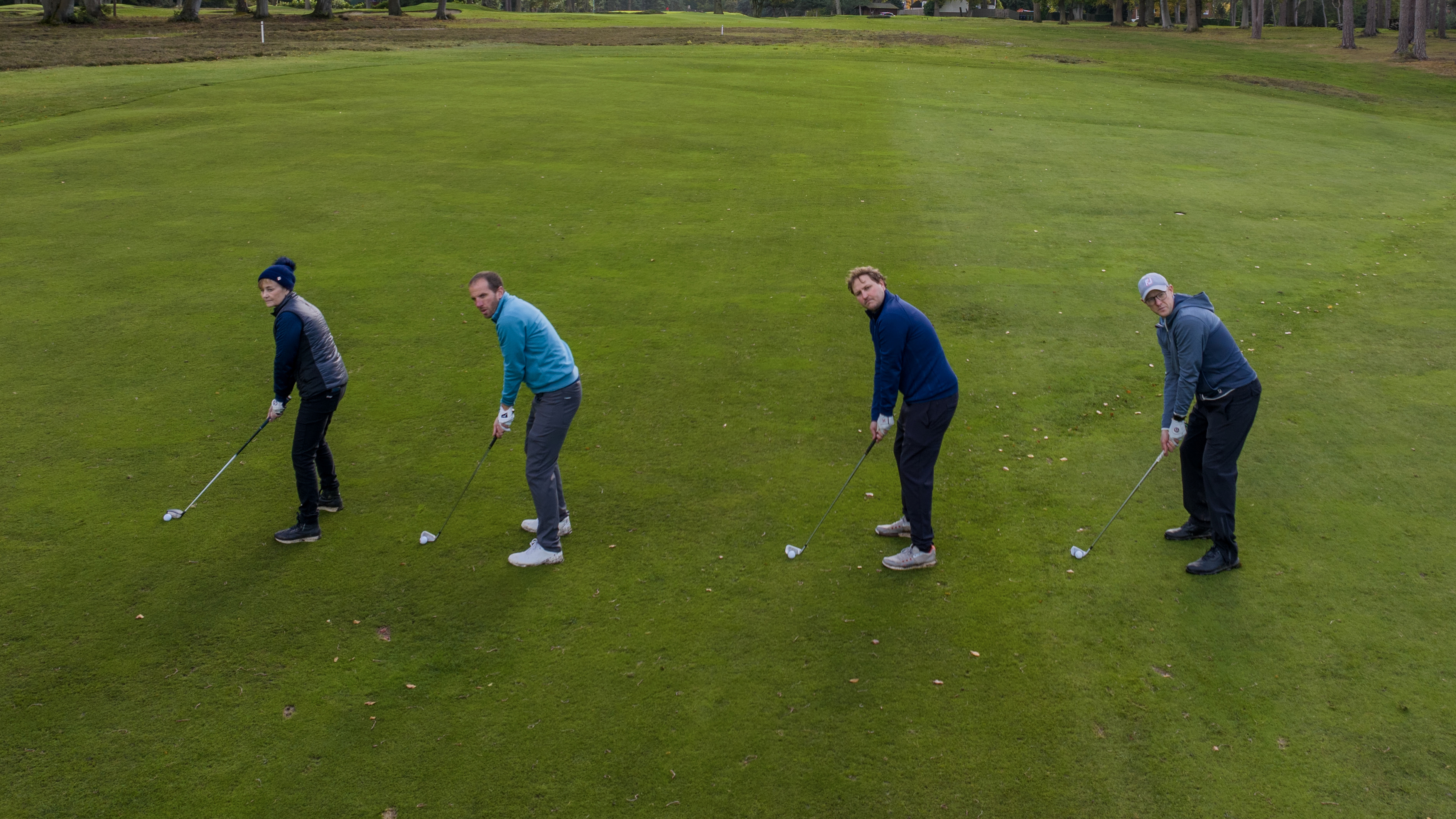

How many times have you sat in the clubhouse with a post-round drink and heard one of your playing partners mutter something along the lines of: “If I could just get the ball in play off the tee, I’d be a single-figure player.” Those sorts of comments are made the world over, for one simple reason: the majority of amateur players hit at least one wayward drive a round that leaves them hacking out of a bush, dropping behind a hazard or reloading off the tee. Surely if we could just find the short grass, even at the expense of distance, we’d all shoot better scores? That was the hypothesis we were keen to put to the test at West Hill Golf Club in early November - the video below shows exactly what happened...
The idea was to play a round as normal in the morning, then start every par 4 and par 5 from the middle of the fairway in the afternoon. However, the start distance would be bespoke to each player, with our four-ball comprising myself (9.6), Neil Tappin (3.9), David Taylor (18) and Alison Root (16) – four players from across the handicap spectrum.
In the afternoon, with the help of game-tracking software Arccos, we worked out our average driving distance and took 25 per cent off that figure, which roughly equates to how far we’d generally hit our ‘fairway finding’ club. We didn’t want to start at 3-wood length as Arccos stats show you’re less than one per cent more likely to find the fairway with 3-wood as opposed to driver. Neil, who averages 286 yards off the tee, started each hole at 214 yards in the middle of the fairway; I began at 189 yards from an average of 252; David started at 175 yards (233 average); and Alison began at 143 yards (190 average).

From L-R: Neil Tappin, Nick Bonfield, Alison Root and David Taylor
Once we’d worked all that out, the experiment commenced from the white and red tees. The weather was crisp yet sunny and West Hill was in great condition despite the recent heavy rain. As we contemplated our opening tee shots, thoughts turned to the challenge ahead. I felt, given the length of the course (6,309 yards), that distance would be more beneficial than accuracy. I expected better scoring in the morning on average, even with the odd lost ball built in, and was certain that Alison – who is known for her straight hitting off the tee – would be at least a couple of shots better in round one. The others weren’t so sure.
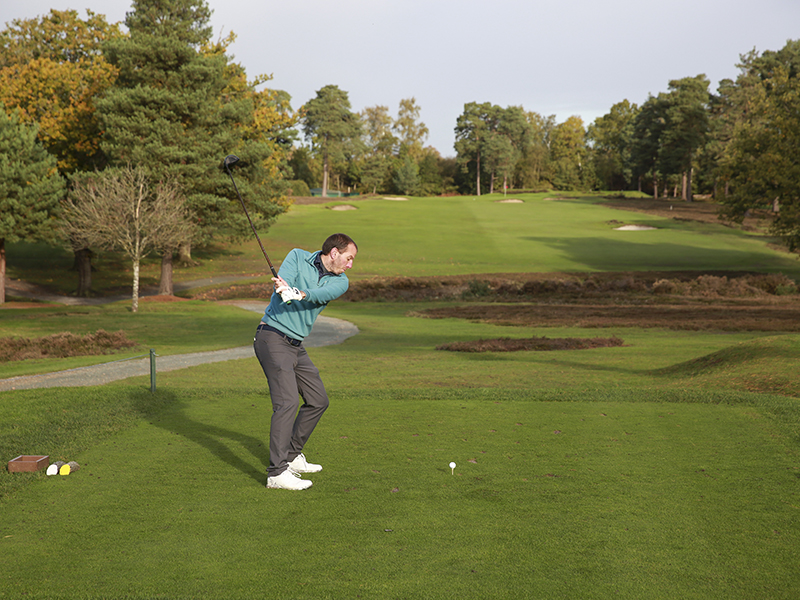
David tees off from the from the 2nd tee
First Round
Aptly, myself and Neil deposited our first drives into the heather, and David and Alison found the stream bisecting the 1st fairway with their second shots. But things improved after that and we all settled into a rhythm more or less akin to how we’d expect to play. There’s no doubt length is beneficial off West Hill’s white tees, but the wet rough and abundant heather also placed a premium on playing from the short grass. Myself and Alison both made double-bogeys on the relatively short 2nd after finding heather off the tee, while Neil and David made safe pars from the short grass.
However, it’s important to recognise that finding the fairway off the tee is by no means a guarantee of full-hole success, especially on the 469-yard 3rd (415 yards from the red tees). David and Alison made double and triple respectively from the middle of the fairway, the former finding a ditch some 50 yards in front of the green with his second.
After nine holes, Alison, myself and Neil were multiple shots worse than handicap, while David was level – perhaps not surprising given he hit 66 per cent of the fairways. Myself and Neil, on the other hand, were struggling off the tee, with a combined four fairways hit. I’m convinced that my front-nine 43 would have been 40 or better had I found the short grass a couple more times.
Get the Golf Monthly Newsletter
Subscribe to the Golf Monthly newsletter to stay up to date with all the latest tour news, equipment news, reviews, head-to-heads and buyer’s guides from our team of experienced experts.
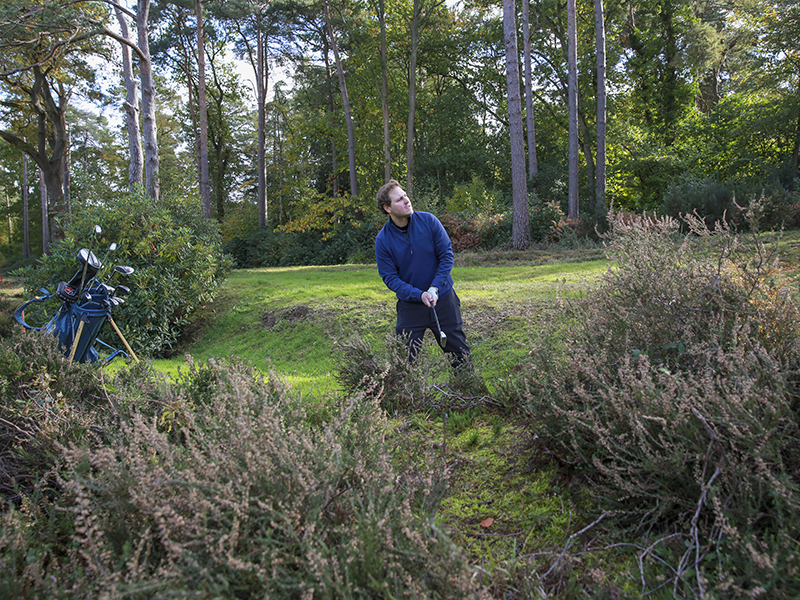
Nick struggled to keep the ball in play during round one
It was a similar story for me on the back nine, with my driver continuing to misbehave. I hit one fairway to come back in 44 and shoot an overall 87 – seven shots worse than my handicap. Alison matched her front-nine 51 on the back side to record a 102, despite hitting the majority of fairways. That said, West Hill is 5,593 yards off the red tees – a long course when combined with next to no roll and wet conditions. David continued to drive the ball well and returned an 86 for a 37-point outing, while Neil played the last seven holes in level-par – thanks, in part, to improved driving – to post a 78.
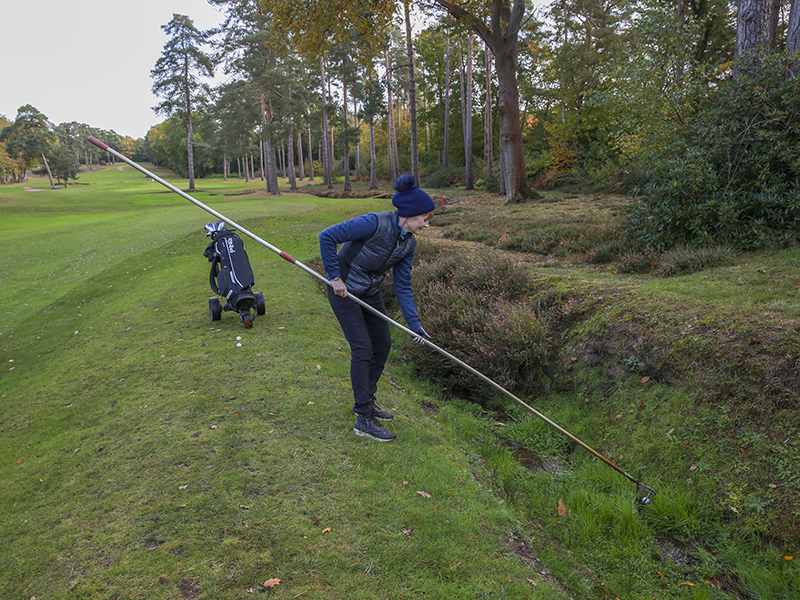
Alison found the ditch on the par-4 10th en route to a triple-bogey
Second Round
After a quick lunch, we were into round two. With the threat of darkness making 18 holes unlikely, we decided to skip the par 3s and replicate our morning scores as the short holes didn’t have any bearing on the experiment. Using Arccos’ hole maps and live GPS distances, we were able to position ourselves at the correct yardage in the middle of the fairway.
Relieved at not having to play my second from heather on the 1st hole, I pulled my 5-iron and watched it sail towards a bush I’d never been anywhere near before. It came up short, but it was an early and timely message that amateur golfers are very capable of finding trouble from the middle of the fairway. On the 3rd hole, Neil pulled his approach onto the railway line en route to a double-bogey, while Alison got tangled up in the heather on her way to a triple-bogey at the 6th.
As we walked off the 6th green, the heavens opened and a biblical deluge poured down on West Hill. Thankfully, it only lasted three holes, but it made the closing part of the front nine very tricky indeed. After the front side, I was one shot better than the morning round; David was two better; Neil was on the same score; and Alison was one stroke worse off – a good effort given how much longer the course was playing for her in the afternoon.
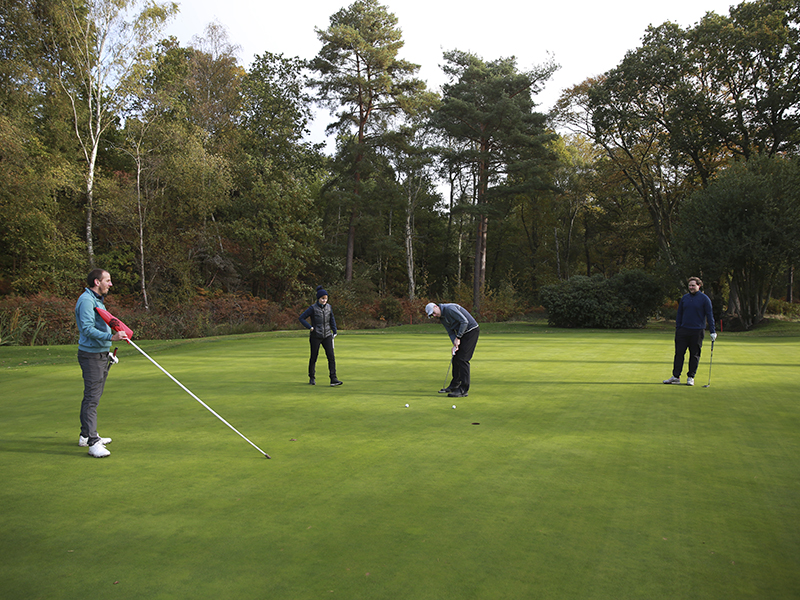
Neil attempts to roll in a birdie putt
Of course, the layout was longer for everyone. Of the 11 par 4s, nine of them play over 380 yards from the whites and four of them are longer than 415 yards, while only one is less than 370 yards. That meant myself, Neil and David were constantly standing over second shots with woods or hybrids in our hands, which brings a certain degree of risk. Yes, we always had perfect lies in the middle of the fairway, but it’s not easy consistently playing approaches from 200+ yards, especially when you factor in weather conditions, light conditions and fatigue from walking 36 holes in one day on a hilly course.
So, how did we score over our second 18 holes? Remarkably, both Alison and David negotiated the layout in the same number of strokes as the morning round. Neil was one shot better and I was five strokes to the good. Even with harder weather conditions and fatigue, no one scored worse than the morning. But what conclusions did we draw?

The Verdict
Neil Tappin
It was a very interesting experiment that left me surprised my scores were so similar. In truth, on another day, my morning round could easily have been in the mid-80s. I drove it very poorly but largely got away with it (because the heather wasn’t too thick on the day). Having said that, the best stint of golf I played on that day was the last eight holes of round one. When playing my best, I’d certainly want the advantage of my full driving game.
Whilst I felt I was lucky to shoot 78 in the morning, I should have been slightly lower than 77 in the afternoon. I was sloppy on the greens (-5 strokes gained putting in the afternoon vs -0.2 in the morning). One other interesting finding was that despite driving it poorly in the morning, my only lost ball was in the afternoon – a 3-wood into the 3rd. On a tree-lined course, hitting approach shots from a long way out makes this a real possibility!
All in all, my feeling was the margin between my best and worst scores would be drastically reduced if I adopted a shorter, straighter strategy. When not hitting it my best, I’d definitely benefit from a more conservative strategy… that is, if I could hit every fairway at 214 yards – which is another question altogether!
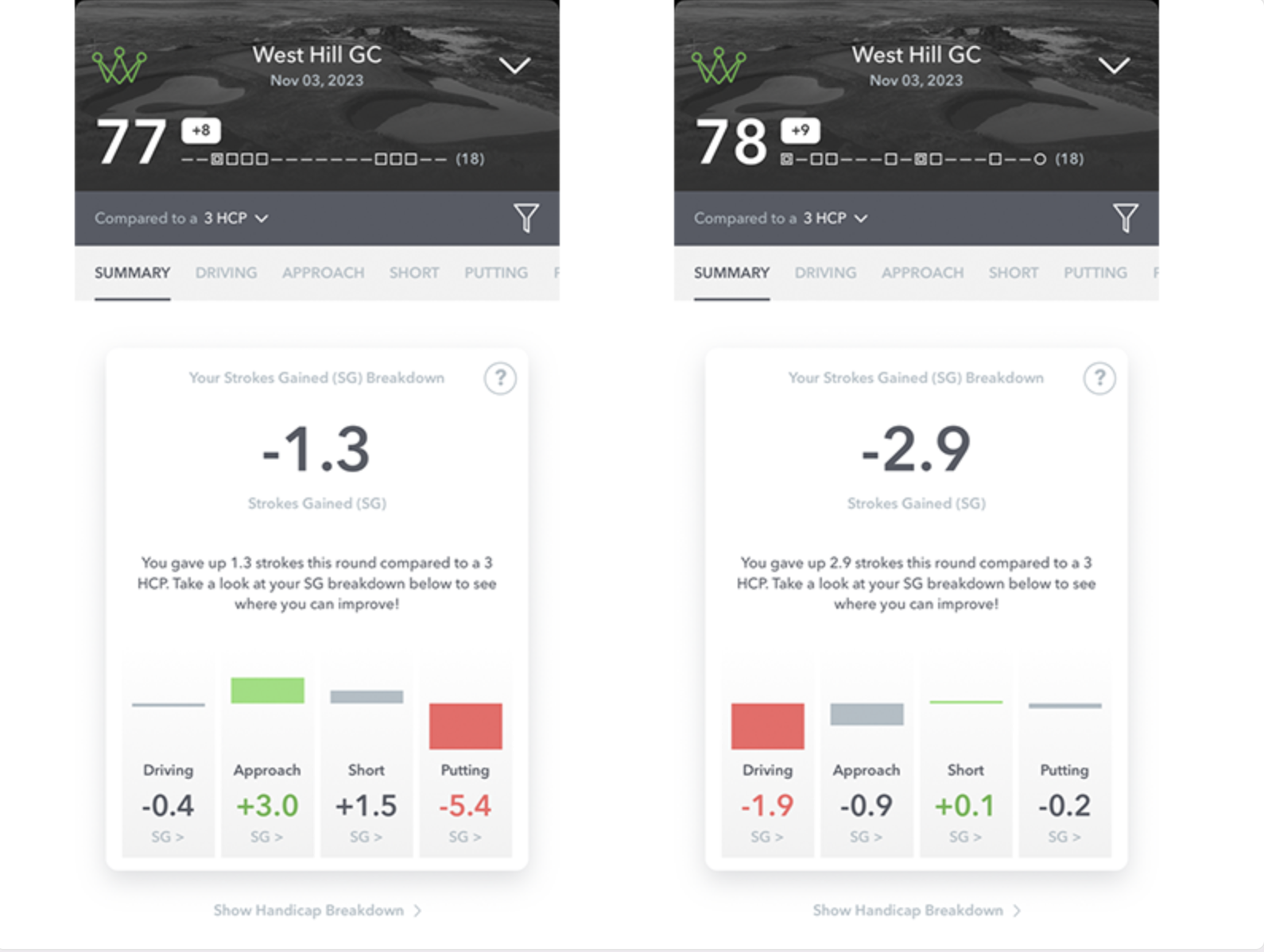
Neil's afternoon (left) and morning (right) strokes gained numbers from Arccos
Nick Bonfield
The reality is that while you can lose balls from the fairway, you’re far more likely to find yourself reaching for a fresh Pro V1 from the tee. If you’re gaining more strokes than a tour player when it comes to driving accuracy, you’re never going to be in bad shape, regardless of distance. Often, golfers can fall into the mindset that you can’t make par if you don’t hit a green in regulation and take needless risks because of it. That’s absolutely not the case.
One of the motivations for hitting driver all the time is the perceived benefit in terms of making birdies, but according to the Arccos data, 10-handicappers make 0.8 birdies per round. Is it really something worth chasing if your driver can be temperamental? The answer to that question will largely depend on your motivations. If you tend to head out with friends in casual games, by all means pull driver every par 4/par 5 and give it a whack – you’ll probably have more fun, you will give yourself more short-iron approaches and you might just shoot your best round ever if you get on a roll. But if you compete in a lot of medals, I’d urge you to consider putting the ball in play off the tee at all costs.
David Taylor
On the face of it, you’d think two rounds of 86 wouldn’t actually be that enlightening. However, now the dust has settled and I’ve looked at the Arccos data, there are definitely some interesting conclusions. I felt I drove it well in round one, but the stats say I only hit five of the 13 fairways and this led to three double-bogeys. I found the heather on five occasions, which led to a hack out each time.
In round two, I ended up hitting a lot of second shots with my 7-wood, none of which got me into any trouble, so much so I only doubled one of the 13 holes, with two pars and ten bogeys. I came off the course feeling I’d played worse because I hadn’t really been able to attack many greens, but my scoring was much steadier. When I play, I love to get the driver out and try and make pars and even the occasional birdie. That’s where the fun comes for me and so this more conservative approach didn’t feel right, although the benefits are quite clear.
Where I do feel this experiment paid the most dividends was on the par 5s. I found the heather on both in round 1 and ended up with a bogey and a double, but in round 2 I found both greens in regulation and it seemed really straightforward. It feels counter-intuitive to put the driver away on the longer holes, but it may well reap rewards.

David made par on the 5th in round two (left), but double in round one after finding heather
Alison Root
I’m usually very straight off the tee, so finding fairways is not a problem. This was generally the case at West Hill, although I did find heather on a couple of occasions, as there were a few long carries. The problem was the rest of my game, particularly in the morning, including too many three-putts that contributed to my score mounting up.
Driving is definitely the best part of my game and as I’m highly unlikely to spray the ball into the trees anyway, I obviously felt disadvantaged in the second round, placing my ball just 142 yards down the fairway. This made several holes feel significantly longer, especially with so many hazards to avoid. However, knowing the course better, I played certain holes, like the par-4 11th, which is stroke index 1 off the red tees, with far more accuracy, making par instead of a quadruple-bogey!
Like most women off a similar handicap, who generally tend to hit the ball straight off the tee, I don’t need to put my driver away, but this proved that I must work on all other areas for greater consistency to improve my scores.
Short And Straight Vs Long And Wayward: Overall Verdict
Just as you would expect, the verdicts vary. In truth, for shorter hitters, there isn't much debate here. Reducing distance is almost certainly going to reduce your scoring potential and whilst Alison shot the same score in both rounds, if she played as well as in round 1 as she did in round 2, the score would have been significantly better.
For the rest of us, the results weren't as clearcut. What's obviously true however is that big scores tend to come from wayward drives and so for Neil, Nick and David, finding the fairway would certainly reduce the number of lost balls and nightmare scores.
Developing a better feel for when to attack and when to defend probably lies at the heart of the answer to the original question. Leaving the driver in the bag when things aren't going well but going for it when swinging your best, is probably the best overall strategy. Having said that, finding the middle of every fairway certainly makes for a much more stress-free round.

Nick Bonfield joined Golf Monthly in 2012 after graduating from Exeter University and earning an NCTJ-accredited journalism diploma from News Associates in Wimbledon. He is responsible for managing production of the magazine, sub-editing, writing, commissioning and coordinating all features across print and online. Most of his online work is opinion-based and typically centres around the Majors and significant events in the global golfing calendar. Nick has been an avid golf fan since the age of ten and became obsessed with the professional game after watching Mike Weir and Shaun Micheel win The Masters and PGA Championship respectively in 2003. In his time with Golf Monthly, he's interviewed the likes of Rory McIlroy, Justin Rose, Jose Maria Olazabal, Henrik Stenson, Padraig Harrington, Lee Westwood and Billy Horschel and has ghost-written columns for Westwood, Wayne Riley, Matthew Southgate, Chris Wood and Eddie Pepperell. Nick is a 12-handicap golfer and his favourite courses include Old Head, Sunningdale New, Penha Longha, Valderrama and Bearwood Lakes. If you have a feature pitch for Nick, please email nick.bonfield@futurenet.com with 'Pitch' in the subject line. Nick is currently playing: Driver: TaylorMade M1 Fairway wood: TaylorMade RBZ Stage 2 Hybrid: Ping Crossover Irons (4-9): Nike Vapor Speed Wedges: Cleveland CBX Full Face, 56˚, Titleist Vokey SM4, 60˚ Putter: testing in progress! Ball: TaylorMade TP5x
-
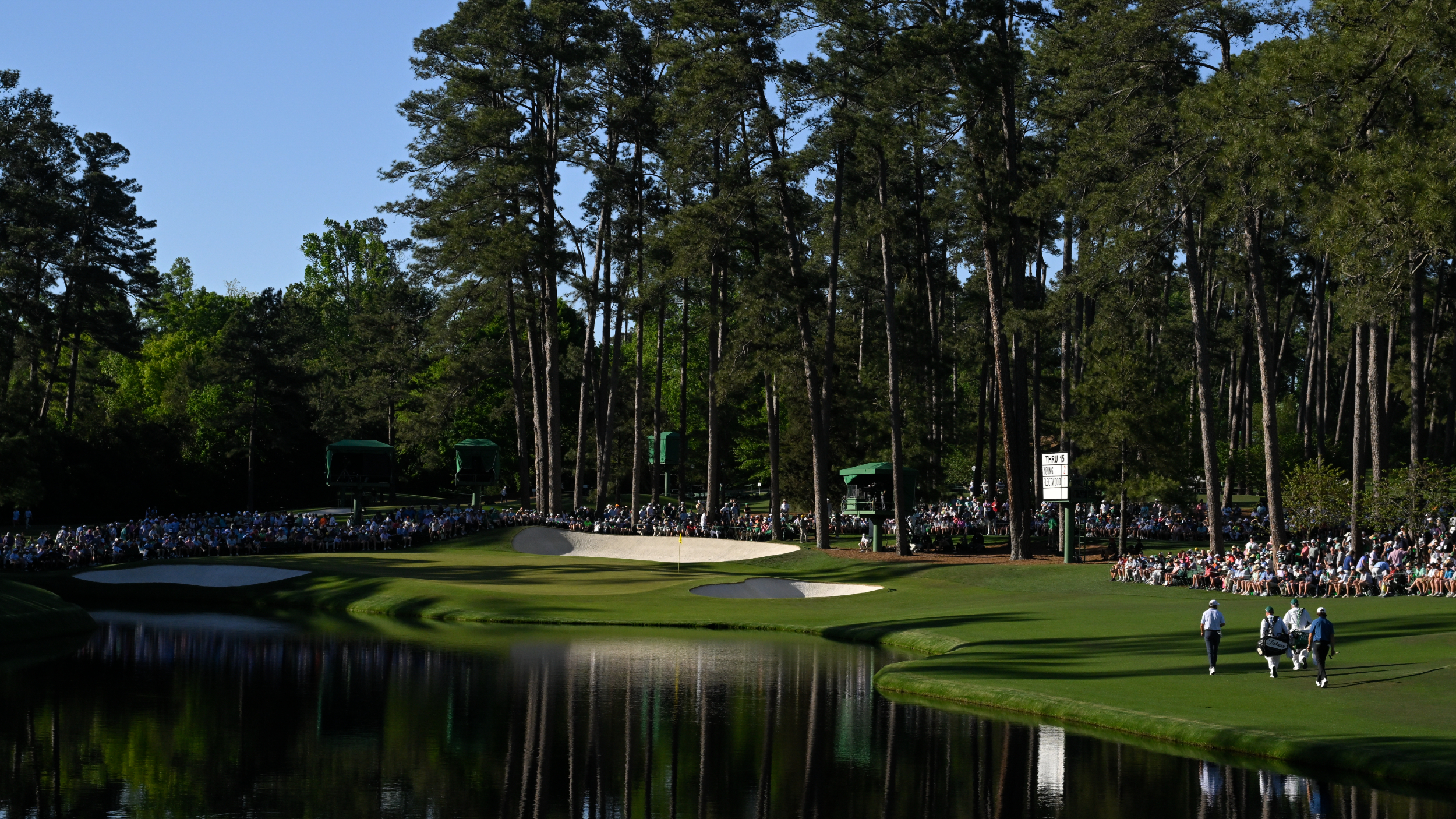 Why The 16th Pin Has Been Moved From Its Traditional Spot For The Masters Final Round
Why The 16th Pin Has Been Moved From Its Traditional Spot For The Masters Final RoundThe 16th pin at Augusta National is in an different position that normal for the final round of The Masters, but why is that?
By Mike Hall Published
-
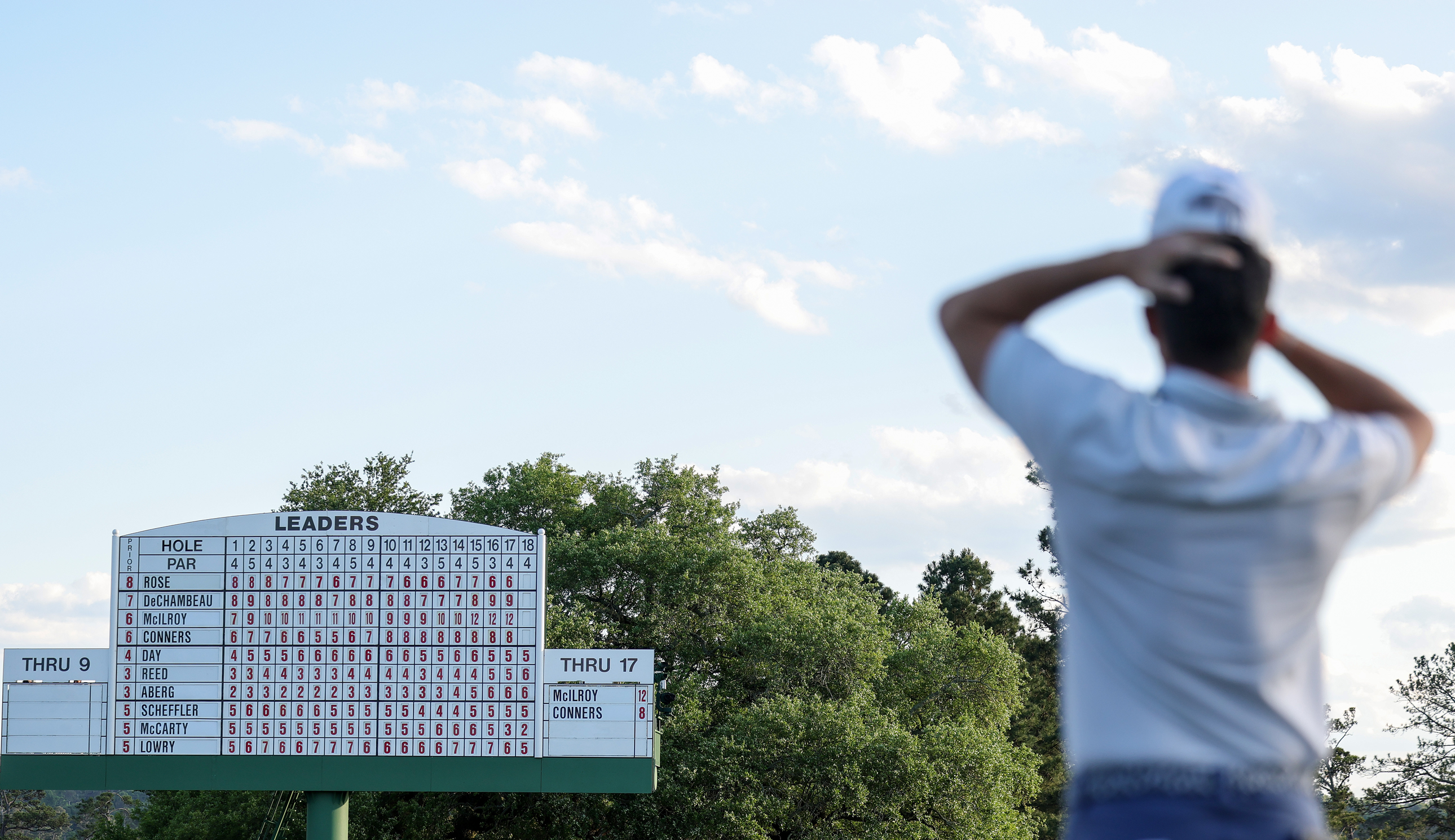 Seve Ballesteros And Brooks Koepka Among The Big Names That Rory McIlroy Would Join As A Five-Time Major Winner With A Masters Victory
Seve Ballesteros And Brooks Koepka Among The Big Names That Rory McIlroy Would Join As A Five-Time Major Winner With A Masters VictoryRory McIlroy leads The Masters going in to the final round and, if he were to win, he would join an illustrious list of five-time Major winners
By Matt Cradock Published
-
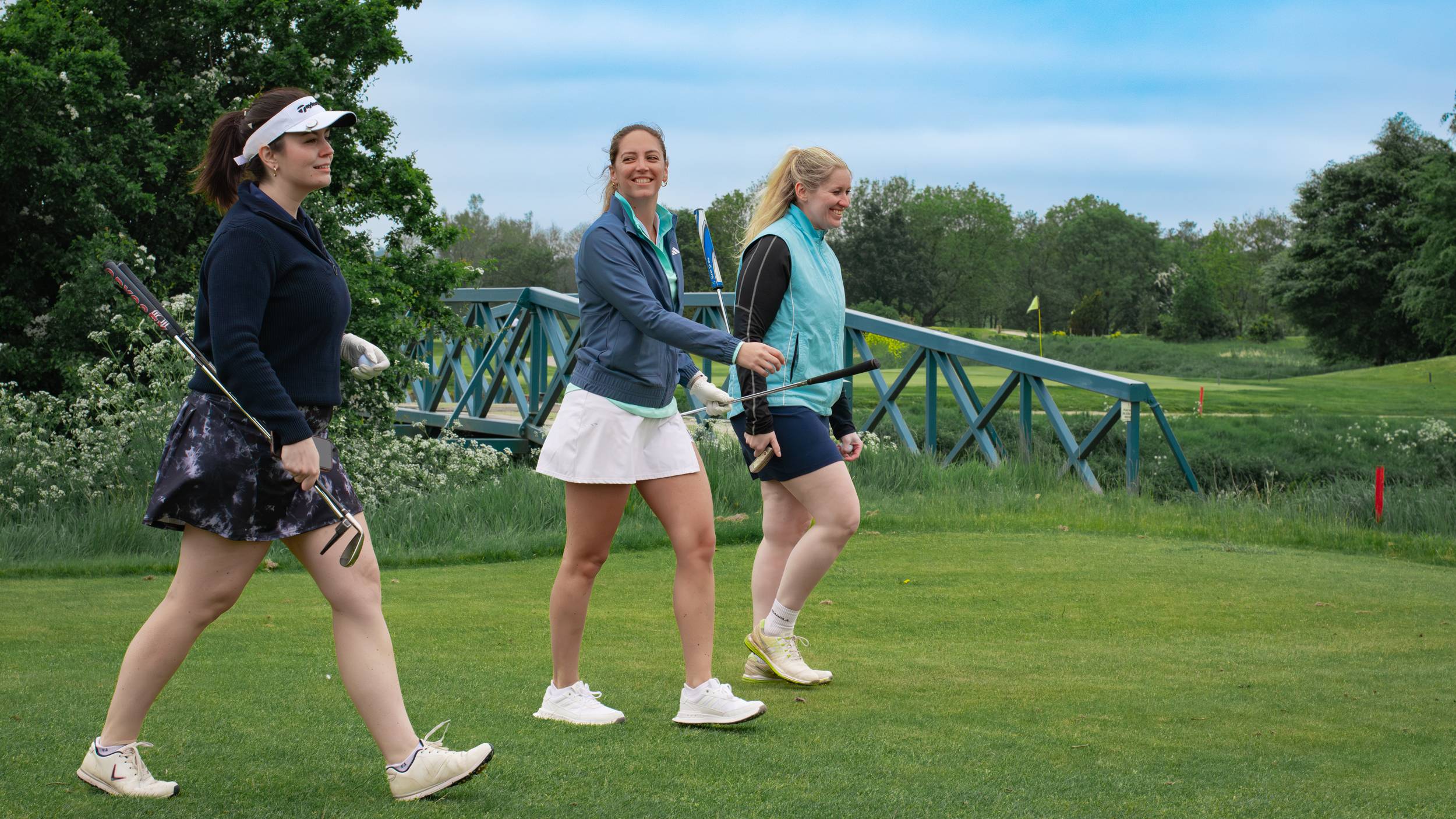 ‘I Want To Play Golf, But…’ - The Women Redefining Golf On Their Own Terms
‘I Want To Play Golf, But…’ - The Women Redefining Golf On Their Own TermsTo coincide with #AccelerateAction, the theme for International Women's Day, we highlight the way female golfers are driving change
By Alison Root Published
-
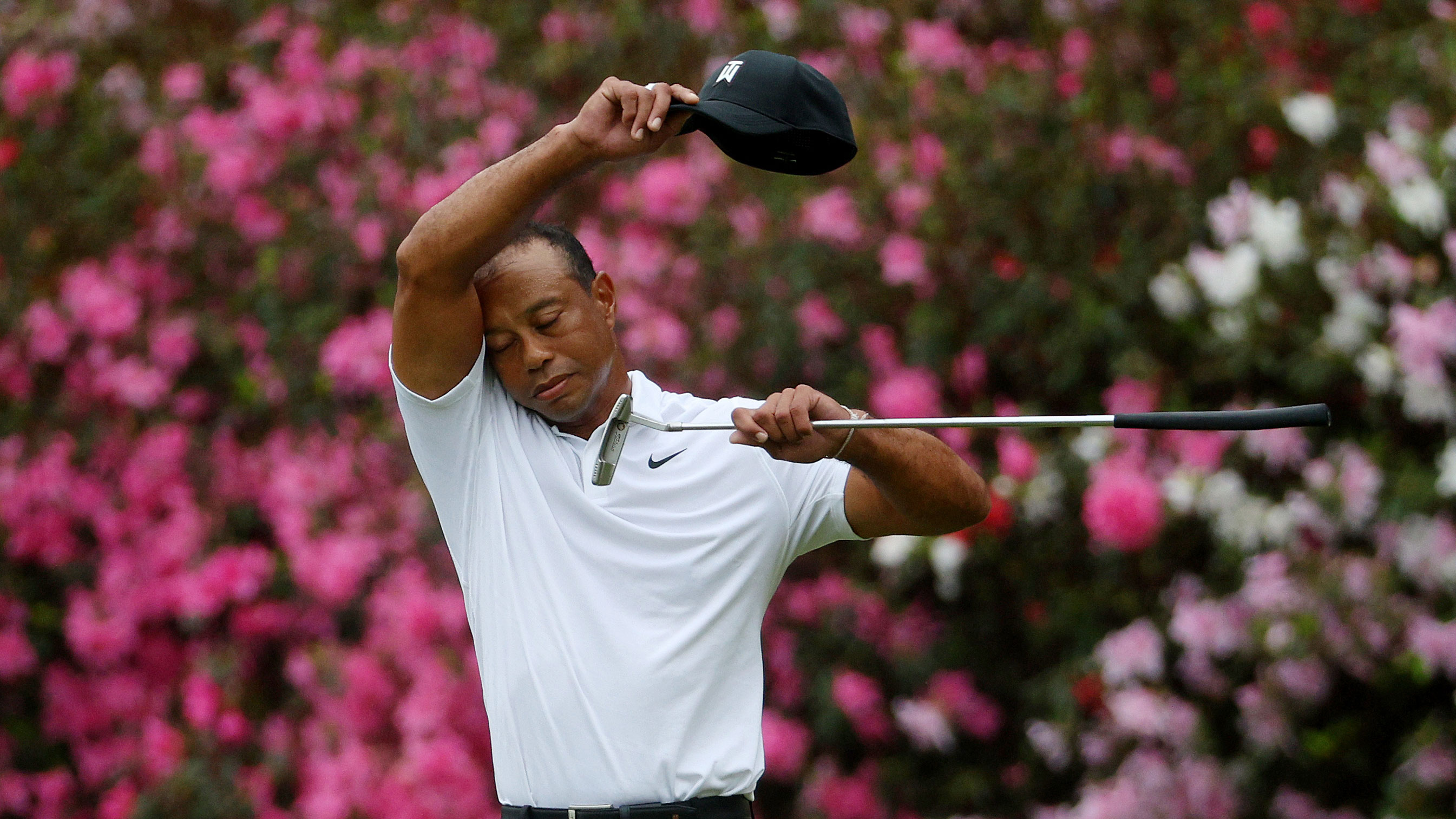 'He Nearly Fresh Aired It. It Came Off The Heel And Almost Hit His Foot' – Legendary Caddie Recalls The Worst Shots He's Ever Seen Tiger Woods Hit
'He Nearly Fresh Aired It. It Came Off The Heel And Almost Hit His Foot' – Legendary Caddie Recalls The Worst Shots He's Ever Seen Tiger Woods HitThe 19th Uncut podcast co-host and legendary caddie Billy Foster looks back on two shots that Tiger Woods will want to forget..
By Mark Townsend Published
-
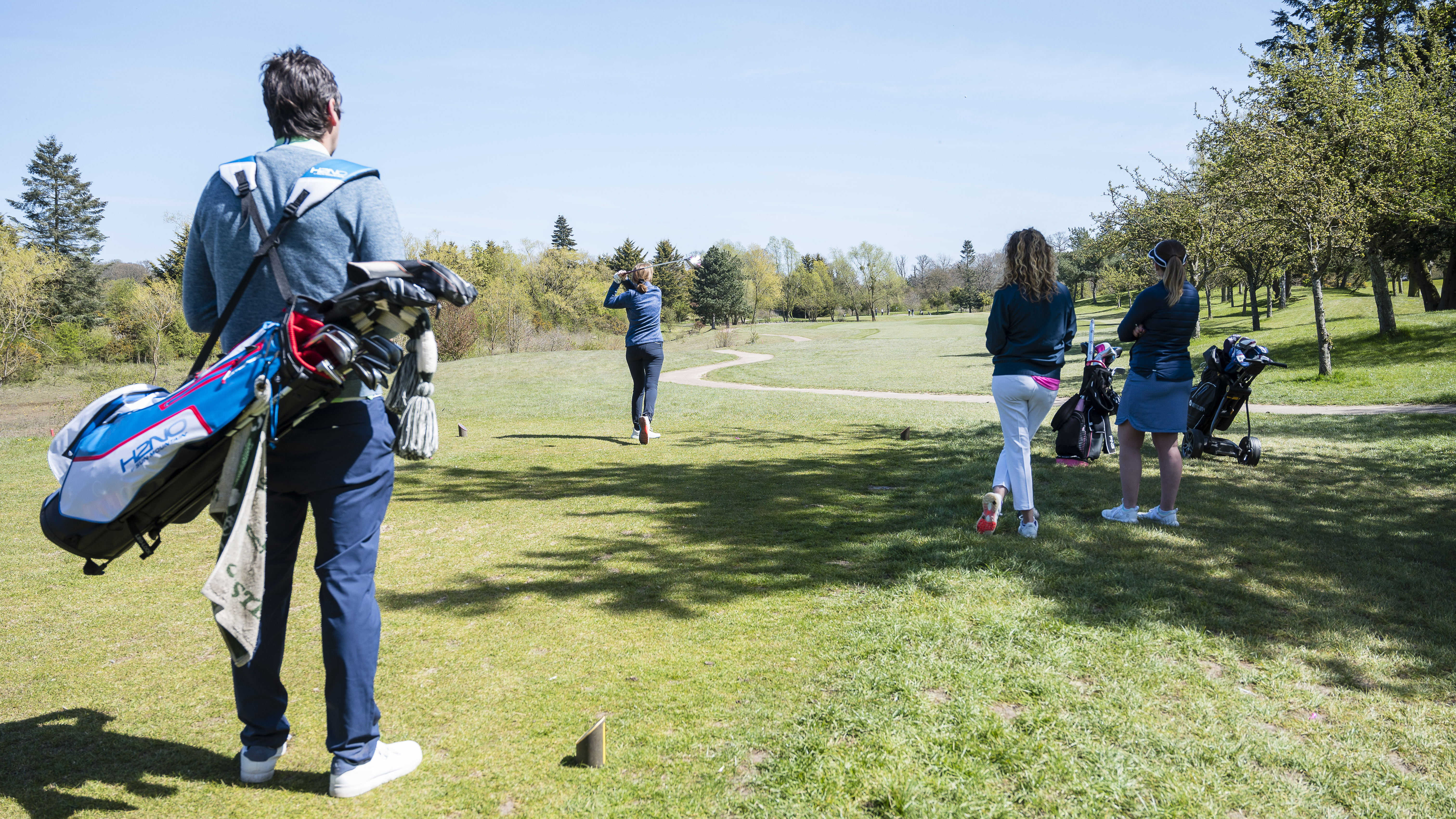 Does A 15-Handicap 30-Year-Old Hit The Golf Ball Further Than A Scratch 50-Year-Old?
Does A 15-Handicap 30-Year-Old Hit The Golf Ball Further Than A Scratch 50-Year-Old?The influence that driving distance has on a player's handicap index is well documented, but how much does age impact the long game battle between two golfers?
By Barry Plummer Published
-
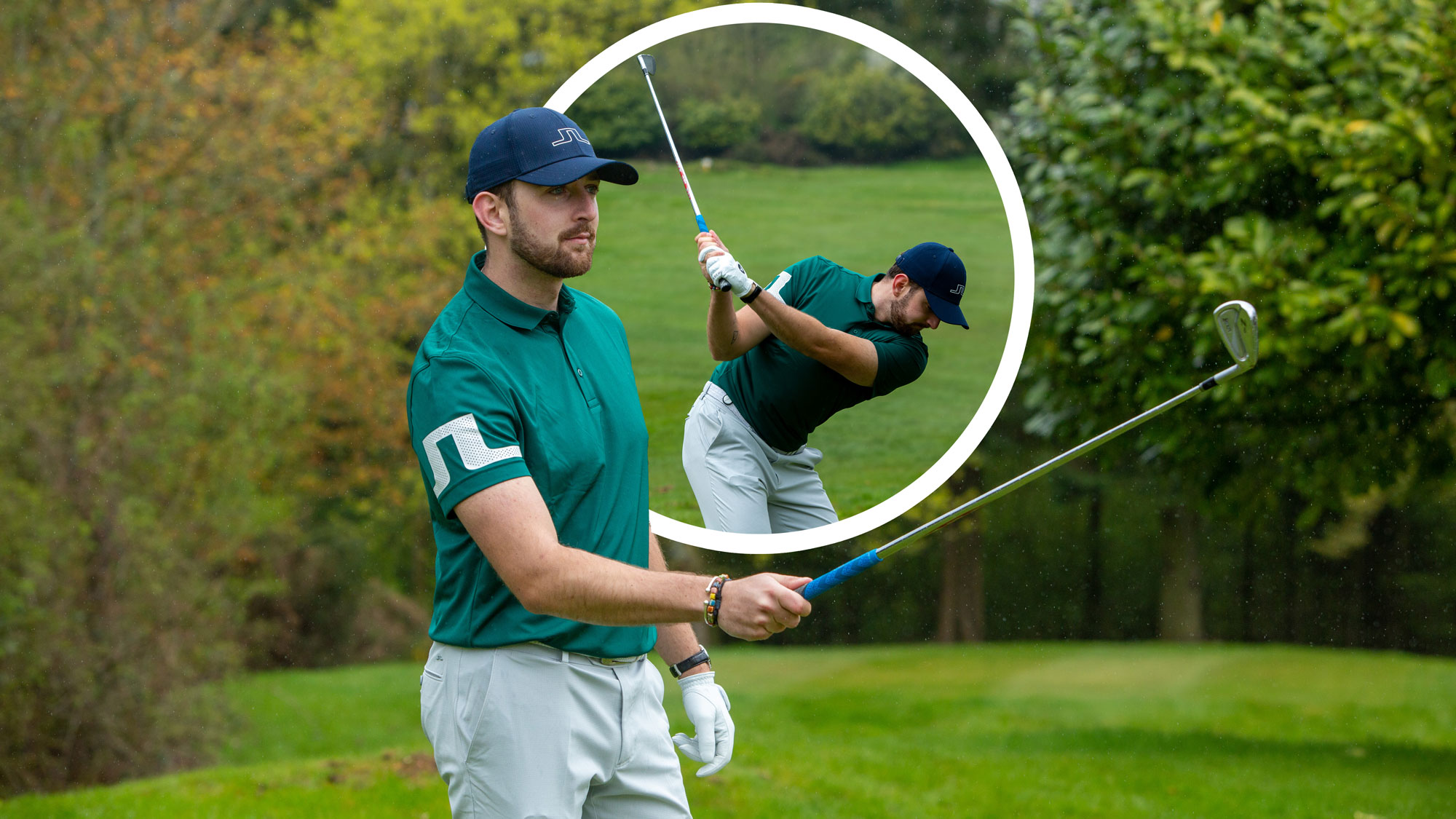 Data Reveals This Once Popular Club Is Dying Out... But What Are Amateurs Opting For Instead?
Data Reveals This Once Popular Club Is Dying Out... But What Are Amateurs Opting For Instead?There have been plenty of moments in golf's history where the game has subtly shifted in a different direction, and we could be witnessing one right now...
By Barry Plummer Published
-
 Less than 10% Of All Tee Shots Are Hit With This Club... Is It Time For A Change Of Strategy?
Less than 10% Of All Tee Shots Are Hit With This Club... Is It Time For A Change Of Strategy?Plenty of amateur golfers step onto the tee box and instinctively pull the driver headcover, but it could be time for a data-informed change of strategy...
By Barry Plummer Published
-
 What Lies Beneath? The 8 Items You’re Likely To Find Buried In Golfers’ Bags
What Lies Beneath? The 8 Items You’re Likely To Find Buried In Golfers’ BagsGolf bags are home to balls, clubs and valuables, but there’s typically much more lurking in the depths that hasn’t seen the light of day in months or even years…
By Nick Bonfield Published
-
 'I Didn't Think I'd Walk Again... Now I Can't Think Of My Life Without Golf'
'I Didn't Think I'd Walk Again... Now I Can't Think Of My Life Without Golf'Double amputee Kushal Limbu recounts the day in Afghanistan that changed his life and tells how golf has been an integral part of his rehabilitation...
By Jeremy Ellwood Published
-
 Amateur Golfers Make Less Than 40 Percent Of Putts From This Crucial Length'... Arccos Data Reveals Stark Putting Truths
Amateur Golfers Make Less Than 40 Percent Of Putts From This Crucial Length'... Arccos Data Reveals Stark Putting TruthsWhen standing over a 'makeable' putt, many golfers would fancy their chances as they pull the putter head back... But this data might make them think twice!
By Barry Plummer Published